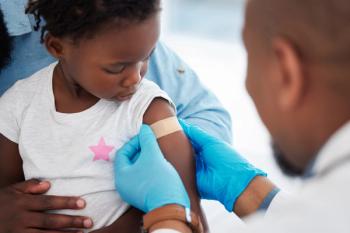
- Consultant for Pediatricians Vol 9 No 5
- Volume 9
- Issue 5
Gunshot Victims With Embedded Fragments: Check for Leaching Lead
Dr John Harrington’s Photoclinic case of a young girl who sustained a gunshot wound in a drive-by shooting highlighted a very important topic.
Dr John Harrington's Photoclinic case of a young girl who sustained a gunshot wound in a drive-by shooting (
For further information on how best to monitor such patients for chronic lead exposure, I suggest contacting the local public health department.
I appreciate your insightful comments, and although my case write-up was necessarily brief, I regret that I did not cover that important aspect of managing gunshot wounds, especially in the vulnerable population of juvenile shooting victims.
The radiograph showed that our patient had just 1 very tiny embedded fragment/lead-based pellet from the snakeshot shell-and that the fragment was not near a joint, bone, or vessel, which means that she would be considered low risk. Thus, we were not immediately too concerned about lead toxicity.
However, after reviewing the literature1 and speaking with our institution's lead expert, we concluded that it would be prudent to follow up with a serum lead level measurement, 6 to 12 months after the injury. Because we do screen for lead in high-risk zip codes in our area, our patient had had her lead level measured at age 4: it was less than 3 μg/dL. Thus, we at least know that she had no lead toxicity before the incident.
References:
REFERENCE:
1.
McQuirter JL, Rothenberg SJ, Dinkins GA, et al. Change in blood lead concentration up to 1 year after a gunshot wound with a retained bullet.
Am J Epidemiol
. 2004;159:683-692.
Articles in this issue
over 15 years ago
What Caused This Breast Lump?over 15 years ago
When to Start Talking About Sex? Earlier Than You May Think!over 15 years ago
Home Alone: At What Age Are Children Ready?over 15 years ago
Nevus of Otaover 15 years ago
Complicated Cutaneous Anthraxover 15 years ago
Newborn With Abdominal Mass and Distentionover 15 years ago
Is this psoriasis-or something else?Newsletter
Access practical, evidence-based guidance to support better care for our youngest patients. Join our email list for the latest clinical updates.










